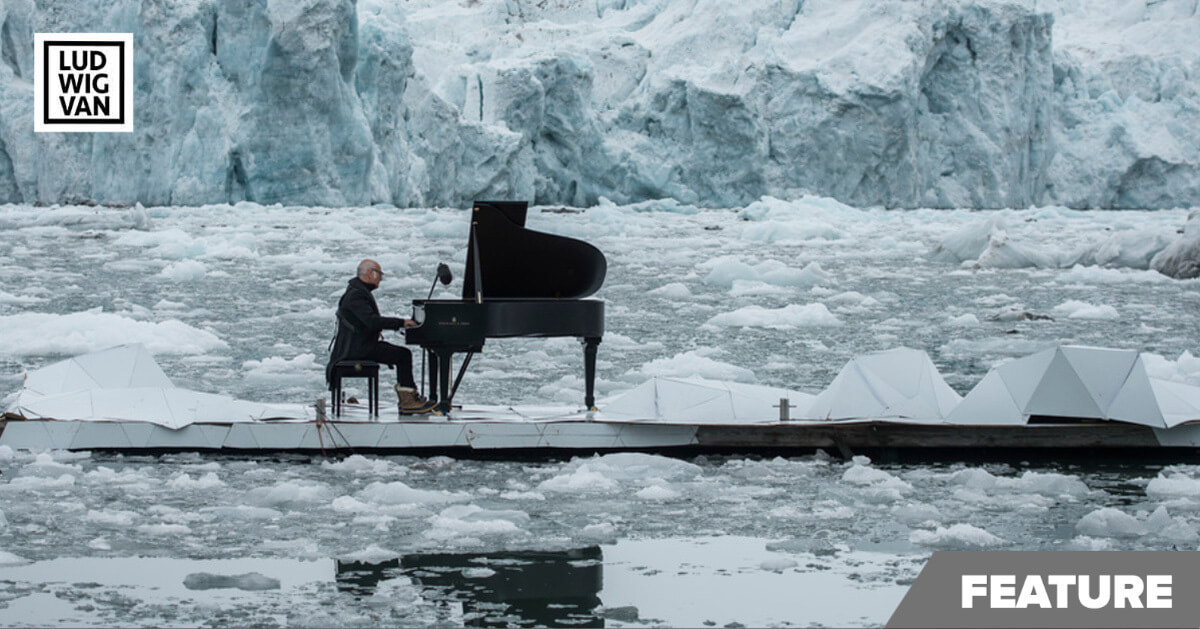
Fossil fuel combustion, industrial processes, deforestation, transportation and even classical music. Wait, what?
Like everything, classical music has a bigger carbon footprint than you probably thought.
Consider music-making spaces. Large ensembles require large performance and rehearsal spaces, and many of them are purpose-built. In order to properly conserve delicate instruments (especially pianos), these spaces must provide an environment with regulated heat and humidity. Heating a big, mostly empty space constantly can require a lot of energy. Fortunately, many spaces are designed with this issue in mind, and as energy costs go up, arts organizations and venues will have a strong incentive to ensure that their spaces are as efficient as possible.
A larger issue is touring. Why do the major professional orchestras tour to cities that also have major professional orchestras? Tours that require air travel, in particular, contribute significantly to greenhouse gas emissions. According to The Guardian’s calculator, a round trip flight from Toronto to New York generates 166 Kg of CO2 per person. Multiply that by a modest 45-person orchestra, and that’s 7470 kg of CO2 — equivalent to 1.6 personal vehicles driven for a year, or over 3100 L of gas.
While tours to nearby regions that are under-served by the arts are a great way to outreach, it’s worth questioning the need to tour to other cities with similar (or even higher) caliber orchestras. It’s hard to justify flying halfway around the world to bring a nearly identical product to an already well-served market. Especially in a time when recorded music is so readily available, the argument that touring is a way for orchestras to gain notoriety is a little bit dated. Touring is also the most obvious example of classical music’s carbon footprint.
Thankfully, many organizations are mitigating these impacts with more emphasis on closer regional tours by bus or train, but these choices are often motivated by cost-savings, rather than an awareness of the climate impacts.
Unfortunately for soloists and chamber groups, international touring is imperative in order to make a living, and some artists are keenly aware of their carbon footprint. A December article in The Guardian clearly lays out these challenges and how some artists are mitigating their impact. For example, violinist Patricia Kopatchinskaja travels by train whenever possible. Canadian folk group the Good Lovelies has taken a different approach by committing to plant two trees for every album or download card they sell while on their 2020 tour.
The next shoe to drop will likely be concerns about sponsorship by oil and gas companies. Activists contend that these companies are using the arts to polish their image and distract people from their business’s core purpose. The museum sector is already dealing with a number of recent protests against exhibits or institutions funded by companies that contribute to climate change. In fact, a protest against BP’s sponsorship of the Royal Opera House in London in July 2019 has already started this trend in the classical music world.
Corporate sponsorship of arts and culture is a sticky issue in more ways than one. In a funding environment where ticket sales only make up a portion of revenue, organizations need to show their ability to earn revenue from multiple sources including philanthropic and corporate giving. In short, it is very difficult to turn down funding. Older audiences seem less likely to care about the source of corporate gifts; it is the younger audiences that organizations so badly need to attract that are more discerning about organizations they support based on an overall fit with their values. This is a trend mirrored in museums as mostly younger activists (who are also more heavily engaged in climate activism overall) are calling attention to the underlying actions and ethics of corporate sponsors.
Some musicians themselves are also keenly aware of climate change and are actively addressing it in their musical practice. Italian composer and pianist Ludovico Einaudi partnered with Greenpeace to bring awareness to the issue by writing a piece and performing it in front of melting glaciers in the arctic. Polish composers Szymon Weiss and Szymon Sutor performed at the 2018 United Nations Climate Change Conference; their piece takes inspiration from Vivaldi’s Four Seasons and makes music that reflects our changing seasons and extreme weather events. Still, others are writing music using climate data.
As climate change weighs heavier on everyone’s minds, it will be interesting to see how the industry adapts. The ball has started rolling, and fortunately the sector is no stranger to adaptation.
#LUDWIGVAN
Want more updates on classical music and opera news and reviews? Follow us on Facebook, Instagram or Twitter for all the latest.
- FEATURE | How Classical Music Is Taking On Climate Change - February 11, 2020
- GUIDE | A Tour of Glenn Gould’s Toronto (Or, How I Visited Three Fran’s Locations In One Day) - January 21, 2020
- FEATURE | Classical Horoscopes: The Signs As Composers - January 4, 2020



